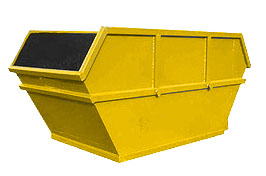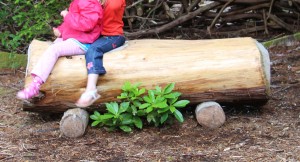Once the overgrown trees and shrubs have been cut back a lot of rubbish will be left; which we need to do something with. Its only once you’ve tidy up your hard work can you really get an idea of what you have achieved and the sense of space you will have created. There a several ways of dealing with green waste: take it to the tip, put it in a skip, re-use it, grind it up or make it into compost. All these have their advantages and disadvantages and in practice most cases will need a combination of some or all of these.

The easiest solution with small quantities is to cut it into manageable sized pieces and take it to the local tip in the car. If there’s a lot, and when cutting back its surprising how much rubbish you will create, a skip might be a better solution. The green waste you produce will be very bulky so you will probably need a large skip and over sized skips are sometimes available for this very reason. You will need to explain you are only putting green waste in, and make sure that is all you do put in, as then you should get a better price. It may seem a waste just to throw it away but these days garden waste doesn’t just get buried in the ground. Its ground and shredded up, and made into compost for reuse. The advantage is that it’s done on a big scale so the machines doing the shredding and grinding will happily swallow things like tree stumps which are very hard to recycle any other way. Also as the material is coming in from a wide range of sources so the compost doesn’t get overwhelmed by one type of material, an important consideration when making compost. Finally the process of making the compost is a commercial operation so it is carefully managed to make a usable and therefore re-sellable product. The main disadvantage is that if you what to benefit from this compost you have to pay to buy it, so you can end up paying twice; once to get rid of it and once to get it back.

That considered you may well feel you would rather recycle the rubbish yourself and this has its advantages. You are not paying someone to do the work and you can be more flexible in the way you use the material. This is though going to take imagination, space, hard work and patience on your part, the results can far outweigh these. First off have a really good look at what you have and start planning how you could make use of it. There is no point in chopping everything up and then finding you could do with some big pieces of wood for something. This may well mean you have to adapt your plans; but this often turns out for the better.
A simple use of small branches is as an edging for informal parts of the garden and these can be built up to form low retaining walls and steps if needed. If you only have a small amount the branches can be cut into equal lengths, say 600mm long, and heaped up to provide valuable shelter for wild life and most importantly the things they feed on. Thin pieces of stick can make simple summer plant supports amongst hardy perennials and in the vegetable garden. Traditionally garden peas were supported by “pea sticks” which they could climb up to keep the plants off the ground. If you are in the fortunate position of having more substantial pieces of tree trunk; these can make very impressive garden seats. Alternatively they can be made in simple but very effective pieces of play equipment.



